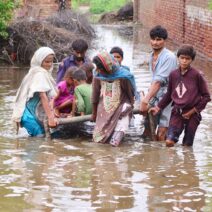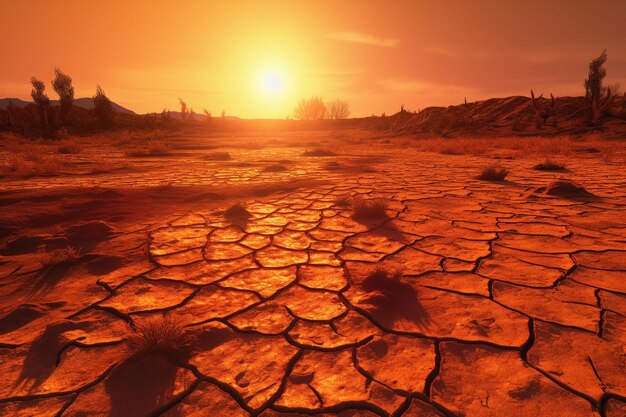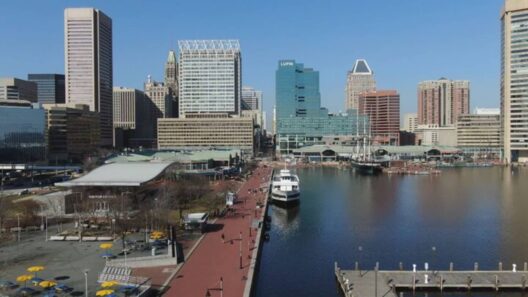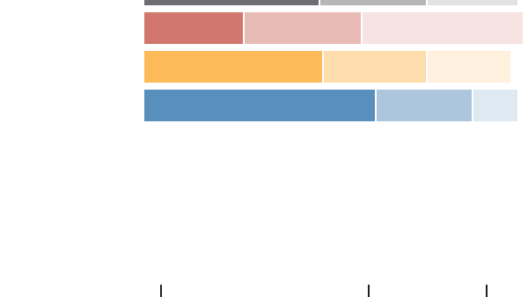Wildlife faces an unprecedented crisis, primarily instigated by the relentless advance of global warming. This phenomenon, triggered chiefly by human activity, exacerbates existing environmental stressors, leading to disruptions in ecosystems worldwide. The resultant implications on biodiversity are profound and alarming. This discourse explores the intricate relationship between global warming, ecosystem disruption, and wildlife extinction.
Global warming, characterized by the elevated concentration of greenhouse gases in the atmosphere, leads to a gradual rise in average global temperatures. Such climatic shifts manifest in myriad ways, notably through altered weather patterns, rising sea levels, and intensified natural disasters. These changes pose a formidable threat to the delicate balance of ecosystems. Species that have thrived for millennia are now facing existential threats; their habitats are no longer hospitable.
One of the foremost impacts of global warming is habitat loss. As temperatures rise, many species are forced to migrate to cooler areas. This is particularly evident in polar regions, where melting ice caps imperil marine species such as polar bears and seals. In terrestrial ecosystems, the relocation of species can lead to invasive species establishing dominance, further destabilizing the native flora and fauna. This displacement often results in increased inter-species competition for dwindling resources, amplifying the risk of extinction.
Furthermore, the decrease in biodiversity precipitated by global warming has far-reaching consequences. Healthy ecosystems rely on a rich tapestry of species to function effectively. Each organism, from the tiniest microorganism to the most majestic predator, plays a critical role in maintaining ecological balance. When specific species disappear, it disrupts food chains and undermines ecosystem resilience. For example, the decimation of pollinator populations, such as bees, due to rising temperatures and habitat destruction has dire consequences for agriculture and plant reproduction.
Coral reefs, often dubbed the “rainforests of the sea,” exemplify the tragic plight of marine biodiversity amid global warming. These vibrant ecosystems are extraordinarily sensitive to temperature fluctuations. The phenomenon known as coral bleaching, exacerbated by ocean warming and acidification, results in the loss of the symbiotic algae that provide corals with nutrients and color. As coral reefs degrade, the myriad species that rely on them for habitat and nourishment are threatened, leading to a cascade of extinctions.
In addition to habitat alterations, global warming incites a shift in species’ phenology—the timing of biological events. Many species rely on seasonal cues for migration, breeding, and feeding. However, as climate conditions change, these cues become misaligned. Migratory birds, for instance, may arrive at breeding grounds before food sources are available, resulting in diminished reproductive success and population declines. This mismatch is pronounced in ecosystems with tightly interwoven relationships, where the reliance on specific seasonal events is critical for survival.
The plight of amphibians further underscores the nexus between global warming and wildlife extinction. Frogs, salamanders, and turtles are increasingly vulnerable to temperature fluctuations and habitat degradation. Their permeable skin makes them particularly sensitive to environmental changes, and many species are already facing extinction as a result of climate-related stressors. The extinction of even a single amphibian species can reverberate through the ecological community, affecting predator-prey dynamics and nutrient cycling.
Another core issue arising from global warming is the expansion of disease vectors. Rising temperatures and altered precipitation patterns can create more favorable conditions for pathogens and parasites, which pose significant threats to both wildlife and human populations. For instance, warmer climates have expanded the habitat range for ticks, leading to increased incidences of diseases such as Lyme disease in both humans and animals. This underscores the interconnectedness of ecosystems and the often-ignored implications of climate change for human health.
To combat these existential threats, immediate action is imperative. Mitigation efforts aimed at reducing greenhouse gas emissions can significantly ameliorate the effects of global warming on wildlife. Transitioning to renewable energy sources, enhancing energy efficiency, and protecting natural carbon sinks, like forests and wetlands, represent critical steps in the right direction. Moreover, conservation strategies that focus on preserving and restoring habitats can bolster ecosystem resilience, giving species a fighting chance against climate-related impacts.
Additionally, fostering community engagement in conservation initiatives and advocating for sustainable practices are pivotal in addressing wildlife crises. Enhancing public awareness about the importance of biodiversity and the consequences of its loss can empower communities to become stewards of their local environments. Education campaigns can illuminate the urgent need for conservation and inspire collective action against global warming.
While the challenges posed by global warming are daunting, they are not insurmountable. By acknowledging the intricate interdependencies within ecosystems and the critical role of biodiversity, we can forge a path toward a more sustainable future. The fight against wildlife extinction demands concerted efforts on multiple fronts—policy changes, public awareness, community involvement, and a collective commitment to environmental stewardship. As the climate crisis continues to unfold, it is an imperative to act decisively and collectively to protect our planet’s precious wildlife and the ecosystems on which they—and we—ultimately depend.








